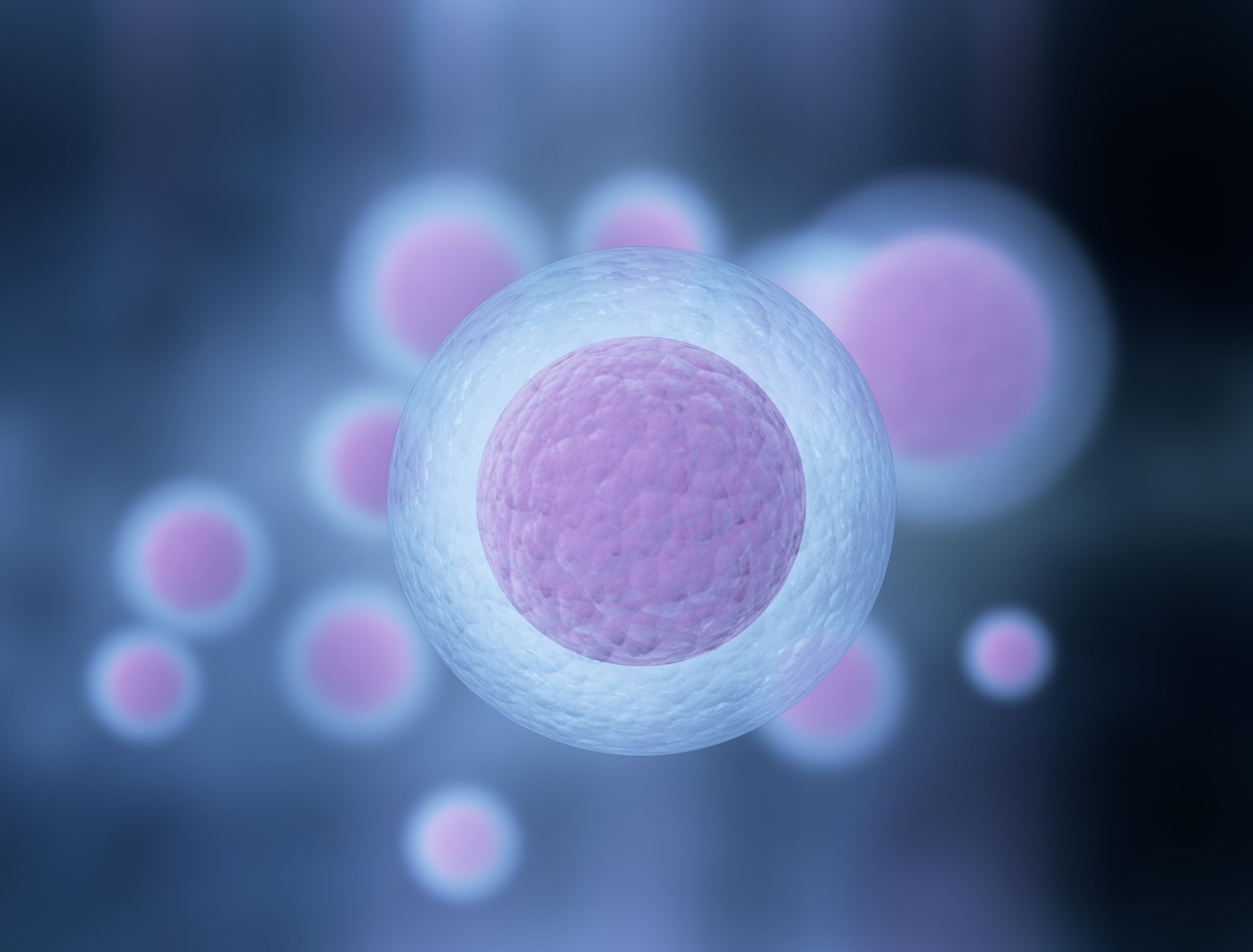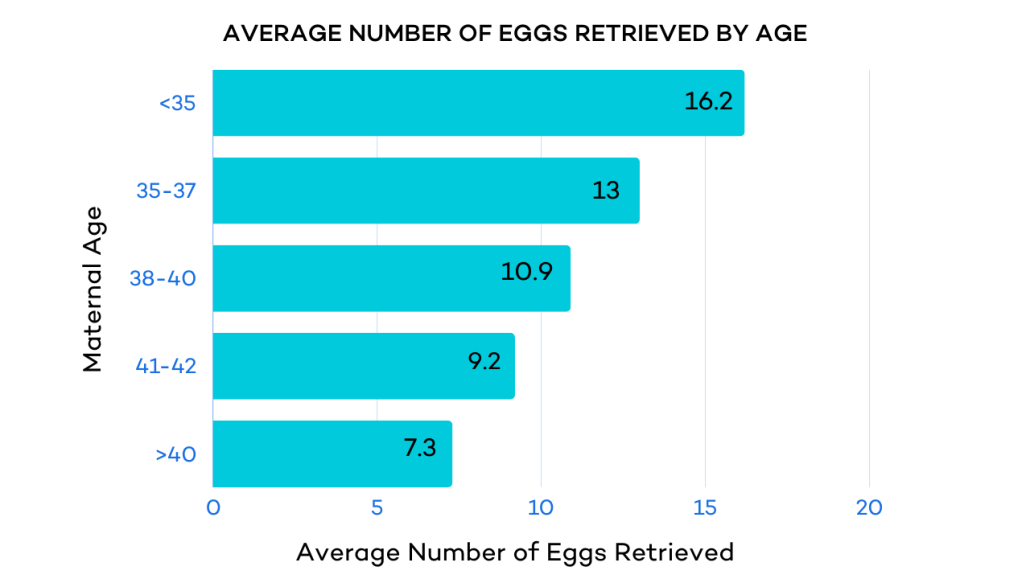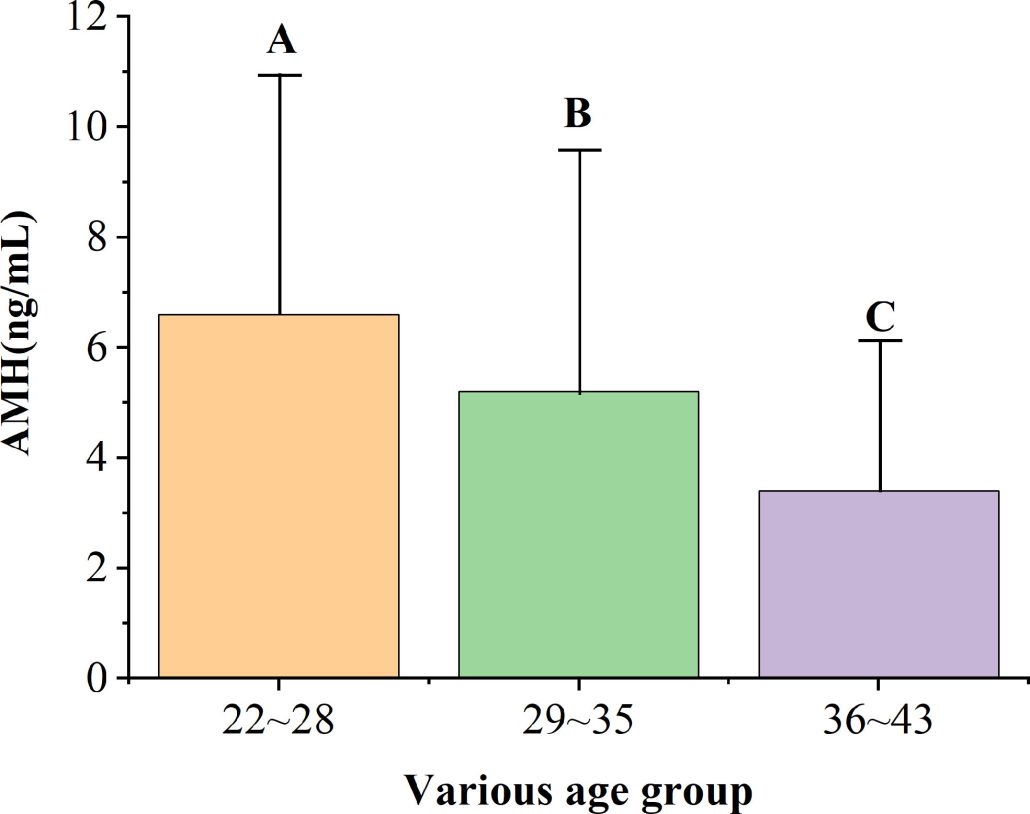Number of Eggs Retrieved in IVF: Average, Optimal, By Age

When undergoing in vitro fertilization (IVF), the number of eggs retrieved can play a pivotal role in determining your chances of fertility success. In fact, the ability to retrieve multiple eggs per cycle is one of the key factors that makes IVF so effective. But most people are in the dark about what the average number is. What’s optimal, and the implications of both age and number of eggs for your chances of having a child.In this article, we’ll unravel the mysteries of optimal egg quantity and how age-related dynamics can shape your IVF journey to parenthood.
Average Number of Eggs Retrieved in IVF by Age
The first stage of the IVF begins with ovarian stimulation and egg retrieval. After 7-10 days of hormone treatments to stimulate the ovaries to produce multiple mature eggs, the doctor uses a thin needle to retrieve eggs from your follicles. Retrieving multiple eggs increases your chances of successful fertilization. (1)
At this stage, 10-20 eggs are retrieved on average. However, there is generally a decrease in the quantity of eggs retrieved as you get older. (3) Women under the age of 35 tend to produce more eggs than older women.
The average number of eggs retrieved in IVF by age are:
- under 35 retrieve 16.2 eggs
- 35-37 retrieve 13 eggs
- 38-40 retrieve 10.9 eggs
- 41-42 retrieve 9.2 eggs
- Over 42 retrieve 7.3 eggs

What is a good number of eggs retrieved in IVF?
Generally, a good number of eggs retrieved in IVF is considered to be around 10 to 15 mature eggs. It’s common for some retrieved eggs to be immature and, therefore, not viable.
This range is often associated with higher success rates in terms of fertilization, embryo development, and the likelihood of achieving a live birth.
IVF Success Rates By Number of Eggs Retrieved?
Based on research from 2011 analyzing more than 400,000 IVF cycles in the United Kingdom, it was generally believed that the IVF success rate increased with each egg up to about 15 eggs. From 15-20 eggs, success rates were found to level off and decline beyond 20 eggs. 6
However, newer research from 2018 challenges these previously held beliefs. A study analyzing over 100,000 IVF cycles between 2007-2013 found that success rates are highest (40-47%) when 17-25 eggs are retrieved. 9
Keep in mind that the quality of the eggs retrieved is just as important as the quantity. A higher number of eggs can increase the chances of obtaining high-quality eggs.
How do AMH levels relate to the number of eggs retrieved?
Anti-Mullerian hormone (AMH) is a protein hormone that is an indicator of a woman’s ovarian reserve–the number of healthy, immature eggs in a woman’s ovaries at any point in her life. Ovarian reserve is an indicator of how many egg-containing follicles are likely to form during the stimulation period of an IVF cycle. 5
In other words, AMH levels are used to predict the number of eggs that will be retrieved in the IVF process. Higher levels of AMH are associated with more eggs retrieved. (5)(6)
|
Age |
Median AMH levels |
Average # of Eggs Retrieved Per IVF Cycle |
|
Under 30 |
2.91 |
17 |
|
30–34 |
2.42 |
16.2 |
|
35–37 |
2.03 |
13 |
|
38–40 |
1.50 |
10.9 |
|
41–42 |
.92 |
9.2 |
|
Over 42 |
.59 |
7.3 |

How do FSH levels relate to the number of eggs retrieved?
In the context of IVF, levels of follicle-stimulating hormone (FSH) is another hormone, like AMH, that is used as an indicator of ovarian reserve and how many eggs will develop. 8
High FSH levels, especially during the early follicular phase of the menstrual cycle, often suggest diminished ovarian reserve and the likelihood of a reduced response to IVF medications used to stimulate the ovaries.9
Reductions in response to medications can lead to fewer follicles and fewer retrieved eggs. For example, one study found that women with basal FSH levels below 10 IU/L had an average of 10.12 oocytes retrieved, while women with FSH levels above 10 IU/L had an average of 6.16 oocytes retrieved.4
This scenario is more likely to occur for older women who generally experience age-related declines in ovarian function.6
How does PCOS impact the number of eggs retrieved?
In the context of IVF treatment, polycystic ovary syndrome (PCOS) often leads to retrieving more eggs per cycle compared to women without PCOS. 8
In one study, women with PCOS averaged 22.8 eggs retrieved per cycle, compared with 16.5 eggs retrieved for women without PCOS.8
Interestingly, a study of 1419 patients found that the optimal number of eggs retrieved from patients with PCOS leading to the highest live birth rate was 15 eggs. 6
Studies have also found that though women with PCOS have higher egg retrieval yields, they have lower pregnancy rates. This is the case even though the eggs are chromosomally as healthy as the eggs of women without PCOS, suggesting other factors that are yet to be identified. 7
How IVF protocol Impacts the number of eggs retrieved
There are various ovarian stimulation protocols that influence the number of eggs retrieved in an IVF cycle. Each protocol entails the use of specific medications, dosages, and timing of use during the stimulation phase.
Gonadotropin Dosing
Here’s a rundown of how different IVF protocols can impact the number of eggs retrieved:
(Standard) Short Protocol
In this protocol, ovarian stimulation starts without prior suppression of natural hormone production. It’s typically quicker and more convenient and has been found to yield the same number of eggs as the long protocol.5 7
Long Protocol (Lupron Downregulation Protocol)
Involves suppressing the body’s natural menstrual cycle using Lupron (leuprolide acetate) to stop the release of FSH and LH and prevent the premature release of eggs. Subsequent hormone injections then encourage the ovaries to produce eggs again.
Mini-IVF Protocol
Mini-IVF entails minimal stimulation by using lower doses of stimulating medications. The aim is to retrieve fewer but higher quality eggs. This approach is suitable for patients who have low or diminished ovarian reserve and do not respond well to higher doses of medication, and for patients at risk of ovarian hyperstimulation. 6
Natural Cycle IVF–No Dose Protocol
Natural cycle IVF involves collecting the naturally ovulated egg without ovarian stimulation. It yields only one egg per cycle but may be preferred by some patients seeking a less intensive treatment or whose religious beliefs restrict the number of eggs that are fertilized at a single time.
Add-ons to Enhance Number and Quality of Eggs
In addition to the standard protocols, there are a few common medications that can be used to enhance egg count and quality in specific cases.
Omnitrope (HGH)
Human Growth Hormone in the form of Omnitrope has been used in the IVF process to increase the number of eggs retrieved.8
A 2019 meta-analysis found that using Omnitrope with IVF can reduce the time to oocyte retrieval, increase the number of eggs retrieved, and lead to more fertilized eggs. However, this study found that there was no overall improvement in the live birth rate.9
Menopur
Menopur is an injectable fertility medication that contains follicle-stimulating hormone (FSH) and human menopausal gonadotropin (LH), which stimulate the ovaries to produce multiple eggs.1
Bottom Line on Number of Eggs Retrieved in IVF
The number of eggs retrieved in IVF treatment has a significant bearing on the likelihood of a successful birth.
As with nearly every factor influencing IVF success rates, the number of eggs that a woman produces is strongly influenced by age. The number of eggs retrieved is only one of numerous factors influencing the likelihood of achieving a live birth.

